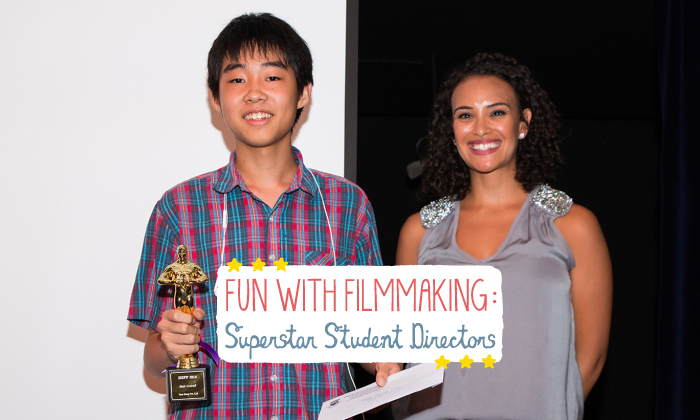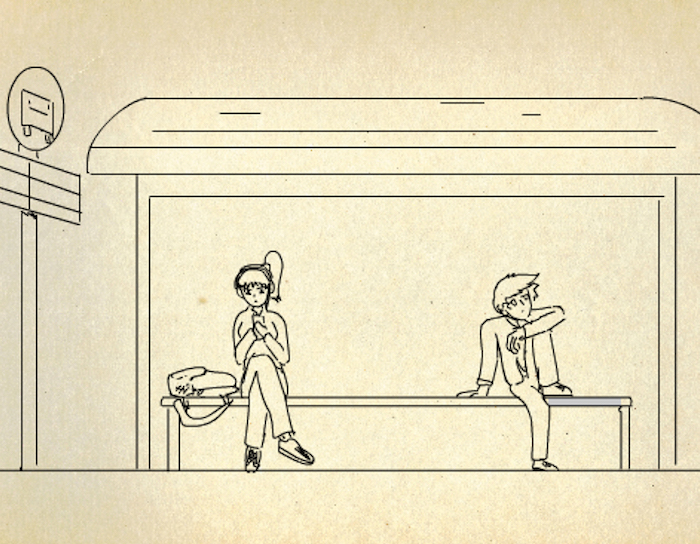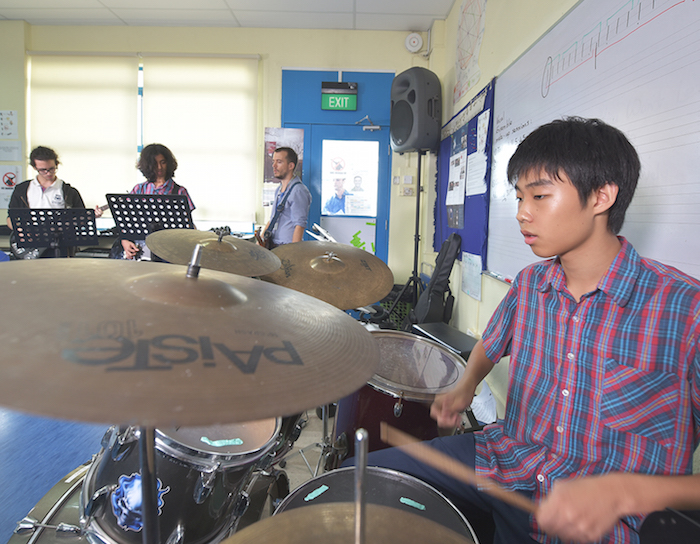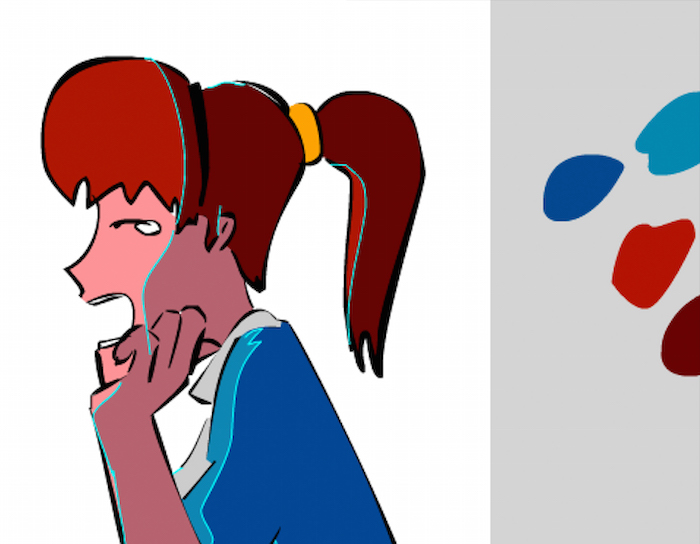
Don’t eliminate screen time just yet, mama, you may have the next Spielberg on your hands! We meet award-winning filmmaker and Chatsworth International School student Siwoo Kim
We recently had the chance to interview Chatsworth International School student Siwoo Kim, 15, whose short film “The Search for Something” was named “Best High School Video Art” and “Best Overall Film” at the 2017 Singapore International Student Film Festival (SISFF) awards ceremony, which took place at Chatsworth this past May. It turns out his passion for filmmaking started at age 6 when he watched a YouTube video and asked his mom how animation worked! Read on for his thoughts on pursuing your artistic passions (and how mamas can help support this), the importance of never giving up, and the tremendous foundation in the arts he’s received at Chatsworth!
Congratulations on your win at SISFF; how did you come up with your project idea?
Thank you! Well, it’s actually quite an interesting story, since it was only a test animation. I was planning to make a film with a similar premise and theme, except it was set at a bus stop. It was called ‘Waiting for the Bus’. I stopped production after about a minute into the film, because I wasn’t skilled enough to have such precise character animation. I decided I would try again when I got older. So all I did was practice, practice, and practice.
In one of the test animations I worked on, I used the characters from ‘Waiting for the Bus’ to create a short animation of the main character yawning. For some reason, I really liked it. I started adding on more and more, soon having colors, backgrounds and a blue butterfly. I constantly added on to it until about 40 seconds into the film, when I decided I should make a storyboard and flesh out the story. I thought this could be something big — at least for me. At first, it was really the emotion, like the feeling of being lost, that I was trying to show. Not knowing where to go or what to do. I was trying to capture that emotion in a visual format using the butterfly. That’s really where I got the idea for the story.
When did you become interested in filmmaking?
I’ve always liked movies, it was fascinating to me when I was young. Especially animation. The first time I made films I was around 6, I made my own “documentaries” with toys. But I was always holding the dinosaur’s tail or using strings to show movement. One day I saw a stop-motion animation on YouTube. I was surprised how the model moved by itself, without any hands being shown. I asked my mom, and she explained to me the illusion of movement. I didn’t need to know further, I just went out into my yard and filmed stop-motion for hours. Since then I’ve never stopped stop-motion. It was so fascinating to me, the fact that I could make my own sets, and tell my own story.
I’ve always liked making stop-motion films, but at the end of Year 8, I became highly interested in hand-drawn animation. Since I had a lot of Adobe programs (including flash cs6), I decided to give it a go. So since then, I’ve transferred to hand-drawn animation on flash. It was only a hobby until I watched three films that changed my view: Fight Club, It’s Such A Beautiful Day and End Of Evangelion. These films showed me what films are capable of, just how much they can move, teach and affect audiences in under two hours. It was brilliant. I’ve tried to make comics and write books, but nothing was able to capture the moments visually and emotionally like a film.

How long did you work on “The Search for Something” for?
I believe it was about a year ago when I first drew the character yawning. And I added on bit by bit throughout the year. You can actually see my style and the quality of animation change from the beginning of the film and the end. It’s because of the time it took to complete this short film. I only started working on it consistently this year, but it began production a year ago. One reason is just the sheer amount of work you have to do. Usually, in studios, the work is split amongst everyone, but I’m just a 15-year-old kid. I dropped the frame rates from 24 (studio standard) to 10, but that’s still 10 drawings per second. Not only does the animation have to be fluid enough to show the illusion of movement, but I need to color that, shade it, and add backgrounds to it. That’s a lot of work. I understand why it’s quite normal for animated films to take a while.
What opportunities did Chatsworth have to pursue your interest in filmmaking?
The film festival is the main one, but another thing that helped was an English unit with Ms. Hoff, where we went through films analyzing shots and learning about the type of camera techniques, etc. Props to her because I feel like I learned A LOT from that unit, and it really helped me in my future filmmaking experiences. I also think the general atmosphere at Chatsworth really helped me: this school takes art very seriously and helps us grow as artists. I have been part of numerous bands and musicals, and I also had the opportunity to make comics for the school newspaper. But in terms of animation, it was almost entirely an independent study I did by myself, because well, I liked it!

What other arts-related projects have you done in your time at Chatsworth?
I chose Visual Arts in the art category for this year, but the only big art projects were the two other films I made. One was called ‘Introjection’, which was about internal struggles, and how one can really boil up everything, all the thoughts, and constant mental torture, and never find a way to express them. The second one was called ‘The Egg’, made under a week and was made after “Introjection”, and it was my very first animated short. It was full of issues all around. Mistakes, lack of skill in general, laziness, etc. It wasn’t perfect but that’s what I did. And I have always had an ongoing comic strip in the school newspaper, which could be considered an art project in itself.
I’ve also been involved in the following CCA’s:
- School musical (since year 6 all the way to year 10. From year 6 – 9 I was an actor and in the year 10 musical I was a guitar player for the band)
- 3D Printing (Since Year 8)
- School Band (drummer)
- Rock band CCA (guitarist)
Do you plan to pursue filmmaking at the next level, or is it just a hobby? Have you done any internships or anything else to this point?
My plan is to become a director. Hopefully a director of an animated film where I can animate some of the scenes as well. So yes, I am planning to pursue filmmaking at the next level. I haven’t done anything to a professional level yet, other than this film itself, but I am taking art and animation very seriously. I have studied animation since the end of year 8, and I haven’t stopped for a while.
My plans are hopefully getting a good portfolio and grades to go to Cal Arts or New York School of Visual Arts, and study to become an animation director/ film director. The dream may sound like I’m reaching too far, as if I’m reaching for the stars before learning how space works, but I think its still worth it. I have several backup plans, just in case, this plan doesn’t work out. I could always become a freelancer, an illustrator, a comic book artist, and if that all fails, I can always turn to music, which is one of my biggest hobbies.

What advice do you have for young kids (or parents of young kids) who are interested in filmmaking? Are there any classes/books/ apps, you would recommend?
First, you should always STUDY. And yes, it might sound boring, but studying and analyzing films isn’t that boring. You don’t really need a notebook or lined paper with the pen. Just whenever you watch a movie, analyze it, especially if there’s an interesting scene. I’m constantly analyzing every film I see as I watch. How they set this scene up, how they did this or that, etc. This applies to animation as well; sometimes I’m watching some cartoons, and I see a very well animated sequence. I’ll then slow down that scene to see each individual frame and how they’re drawn. You don’t need to sit and write down anything or think for too long, just analyze things you see. That’s film study, basically.
The second tip is to always learn the basics first. If you want to do filmmaking, learn the basic camera angles and shots. If you want to animate things, learn the 12 principles of animation first, and start with a bouncing ball. The first animation I ever did on flash cs6 Is the bouncing ball. Now I’m animating characters regularly. You can do what you want, but learn the basics first, because you can create anything from there.
The third tip is to never give up. When my film, ‘Introjection’ lost in the last film festival, my friend and I were devastated. We put a lot of work into the film, and yet we lost. Now, we could have just said “This is too much, I can’t believe we lost. I give up filmmaking. There’s no use!”… but then I wouldn’t have won the film festival this year. Whenever there’s failure, don’t let it discourage you, let it ENCOURAGE you. Take that and be like “Heck yeah, I can do twice – no, three times – better than what I did last year.” And go for it. Never give up. Hard work will pay off.
Finally, here are some great resources to learn filming and animation. For filming, the book Setting Up Your Shots: Great Camera Moves Every Filmmaker Should Know by Jeremy Vineyard helped me a LOT. The book is full of all different camera shots with great illustrations to help. For anyone starting out with filming, you could check that book out.
For animation, a book that literally any animator I have seen or met has read: The Animator’s Survival Kit by the legendary animator Richard Williams (the animator of Who Framed Roger Rabbit and the director of Thief and The Cobbler). It’s absolutely a must-have for anyone who’s starting out animation.
Other great resources include YouTube channels like Howard Wimshurst and Alan Becker. Alan Becker is best for beginners starting out, and Howard’s channel is more for people who are ready to go to the intermediate level to learn more complex animations.
So to any future animator/filmmaker’s, don’t give up. Practice, get good, practice more, and get better, and continue. Hope this helped.
![]()
Thanks so much, Siwoo, and congrats again on all your impressive accomplishments! To find out more about Chatsworth International School, you can book a campus tour by calling the Admissions Department at (+65) 6737 5955 or emailing [email protected].
![]() Chatsworth is taking over the current GESS campus in Bukit Timah in August 2018; enjoy a waiver of the application fee and 25% off the confirmation fee for enrolling into the new Bukit Timah campus. Terms and conditions apply.
Chatsworth is taking over the current GESS campus in Bukit Timah in August 2018; enjoy a waiver of the application fee and 25% off the confirmation fee for enrolling into the new Bukit Timah campus. Terms and conditions apply.
Chatsworth Orchard Campus, 37 Emerald Hill, Singapore 229313, Tel: +65 737 5955, [email protected], www.chatsworth.com.sg






 View All
View All





 View All
View All









 View All
View All








